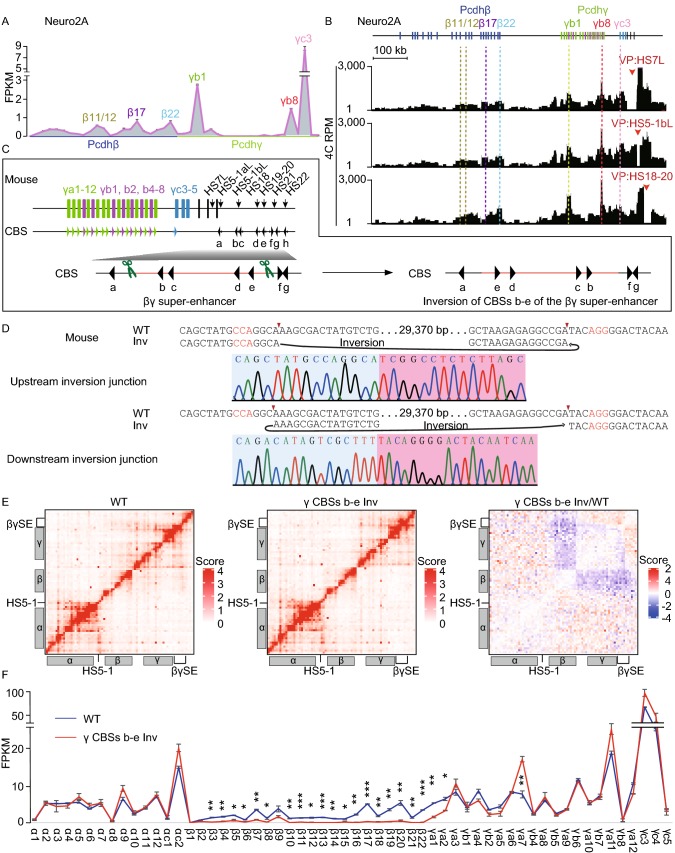Figure 2.
Genetic dissection of the super-enhancer of thePcdhβγclusters by CRISPR DNA-fragment editing. (A) RNA-seq results of the expression of distinct isoforms of the Pcdhβγ clusters in mouse Neuro2A cells. (B) The 4C interaction profiles of distinct isoforms of the Pcdhβγ clusters with the HS7L, HS5-1bL, or HS18-20 as a viewpoint. (C) Schematic showing the dual-sgRNAs-mediated DNA-fragment inversion of the super-enhancer CBSs b-e in mice in vivo. Note the upstream staggered cleavage at − 4 positon on the noncomplementary strand by Cas9. (D) Confirmation of upstream and downstream junctions of the CBSs b-e inversion mice by Sanger sequencing. (E) 5C heatmap of the entire Pcdh locus in P0 mouse brain tissues. (F) RNA-seq showing a significant decrease of expression levels of members of the Pcdhβ cluster. Data are means ± SEM (n = 2). *P < 0.05, **P < 0.01, ***P < 0.001. (G) An asymmetric blocking model of cohesin sliding by directional CTCF binding to oriented insulators as suggested by genetics data


